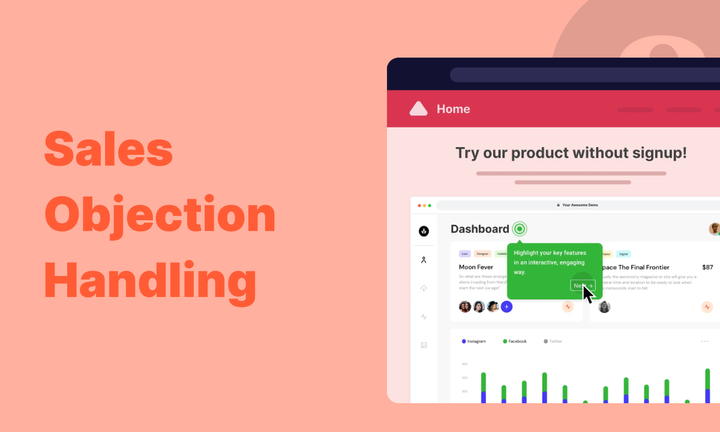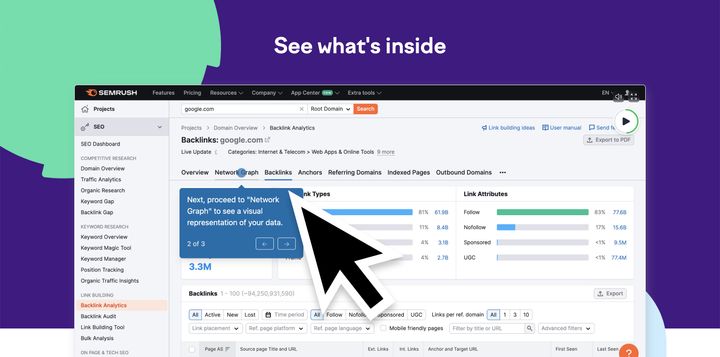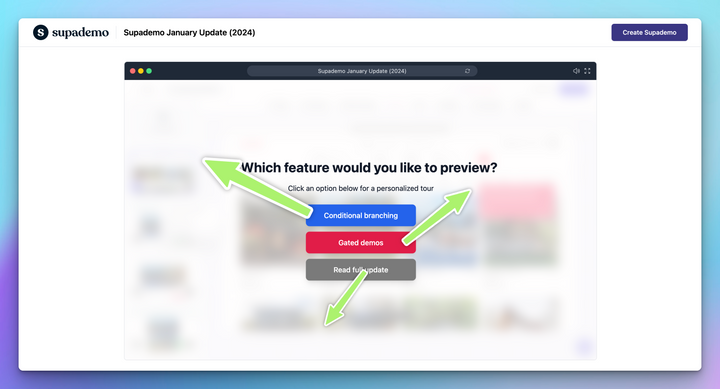Sales objections aren’t roadblocks. They’re opportunities wrapped in resistance. In fact, data shows that around 60% of customers resist with a “No” before they say “Yes” to your offer.
When prospects push back or raise concerns, they're sharing valuable information about their decision-making process and what matters most to them. But top performers in sales know objections are a natural part of the buying process and use them to build stronger relationships with prospects.
In this guide, we show you exactly how to handle objections in sales with confidence and skill. You'll learn to identify different objection types, apply a proven 5-step framework, and turn resistance into revenue. Let’s get into it!
- Always let prospects finish speaking before responding to show respect and gather complete information about their real concerns.
- Price objections often mask value concerns, so redirect conversations to ROI and cost of inaction rather than defending your pricing.
- Authority objections are opportunities to map the decision-making process and get introductions to key stakeholders.
- Use the listening, acknowledging, clarifying, addressing with evidence, confirming, and advancing approach to handle any objection systematically.
- Interactive demos from Supademo prevent objections by letting prospects experience your solution rather than just hearing about it.
What is sales objection handling?
Sales objection handling is the process of addressing prospect concerns, questions, or resistance during the sales process. It involves listening to what prospects say, learning about their underlying concerns, and responding with information or solutions that move the conversation forward.
Objections aren't rejections. They're requests for more information, clarification, or reassurance. When a prospect says that the product is too costly, what they might really mean is "I don't see enough value yet" or "I need to justify this cost to my team." Effective objection handling uncovers these real concerns.
Objection handling vs. negotiating
The key difference between objection handling and negotiating is the timing and purpose. Objection handling educates prospects while negotiating finalizes agreed-upon deals.
Here's how they differ in practice:
Objections vs. obstructions
Knowing which type of resistance you're facing helps you respond appropriately and focus your energy on qualified prospects. Here’s how obstructions differ from objections:
Why is objection handling in B2B SaaS sales important?
B2B SaaS sales cycles are complex, involving multiple stakeholders and significant financial commitments.
Here's why mastering objection handling is crucial for your sales success:
- Trust and credibility building: When you address concerns directly and provide thoughtful responses, you demonstrate expertise and a genuine interest in solving their problems.
- Revenue impact: Sales reps who handle objections well are more likely to close deals than those who avoid or poorly address prospect concerns.
- Competitive advantage: The ability to turn resistance into opportunity directly impacts your revenue and career success in today's market.
- Buyer behavior alignment: Customers can resist multiple times before finally agreeing to a deal, making objection handling essential for persistence.
- Relationship strengthening: Proper objection handling positions you as a trusted advisor rather than just another vendor pushing a product.
11 types of sales objections and how to handle them
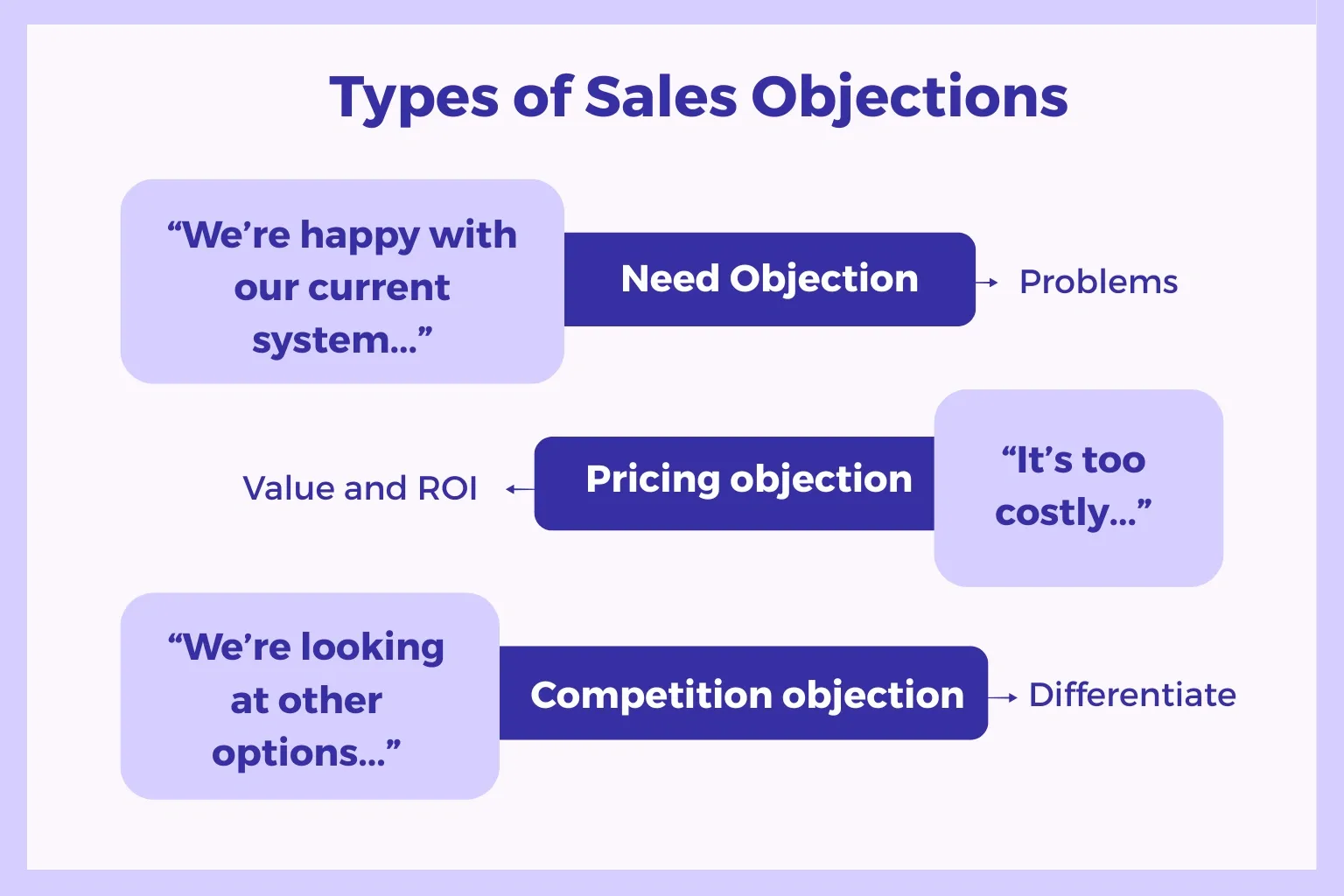
The most common objections require specific approaches based on the underlying concern. Let’s see how you can handle each type of objection effectively:
1. Price objections
Price objections are the most common in B2B sales. Prospects might say, "It’s too costly," "We don't have the budget," or "Your competitor is cheaper." These statements often mask deeper concerns about value perception or budget allocation.
Respond by redirecting the conversation to value and ROI. Ask questions like "What would you need to see to justify this investment?" or "How are you currently handling this challenge, and what's it costing you?" Share specific examples of how similar customers achieved measurable results.
For instance, if a prospect says your solution costs too much, you might respond: "I get that cost is a concern. Let's look at what you're spending now on manual processes and the potential revenue you're missing. Many customers find our solution pays for itself within three months through increased efficiency."
2. Decision-maker objections
Decision-maker objections occur when you're speaking with someone who can't make the final decision. Common phrases include "The decision isn't up to me," or "I'll have to run this by the committee."
Don't push against these objections. Instead, use them to learn the decision-making process and get introductions to key stakeholders. Ask "Who else is involved in this decision?" and "What information would help them evaluate this solution?"
Offer to facilitate conversations with decision-makers. You might say: "That makes sense. Would it be helpful if I prepared a summary of our discussion and the key benefits for your team? Could we schedule a brief call with your manager to address any questions they might have?"
3. Need objections
Need objections suggest prospects don't see the problem you're solving or believe their current solution is sufficient. They might say "We're happy with our current vendor," "This isn't a priority right now," or "We don't really need this."
Frameworks like SPIN Selling are especially effective here, since they help you uncover hidden needs through structured Situation, Problem, Implication, and Need-payoff questions that guide prospects to recognize the value gap themselves.
Use questions like "How much time does your team spend on this process each week?" or "What happens when your current system goes down?"
For example: "I hear that you're satisfied with your current approach. Many of our customers felt the same way initially. However, they discovered they were losing potential revenue opportunities they didn't even know existed. Would you be open to seeing how this might apply to your situation?"

4. Trust objections
Trust objections reflect concerns about your company, product reliability, or your personal credibility. Prospects may worry about working with a newer vendor or question whether your solution delivers results. The best way to overcome this is through social proof.
Robert Cialdini, renowned psychologist and author of the bestseller Influence, explains:
“We view a behavior as more correct in a given situation to the degree that we see others performing it.”
You could respond: "I get your concern about working with us. Here's what I can share about our track record..." Then provide specific examples of successful implementations and offer to connect them with existing customers who can share their experiences.
5. Timing objections
Timing objections indicate prospects aren't ready to move forward immediately. Common examples include "Now isn't the right time," "We're too busy with other projects," or "Let's revisit this next quarter."
The Challenger Sales approach works particularly well here. By teaching prospects something they hadn’t considered or reframing their priorities, you can turn a “not now” into a meaningful, insight-driven conversation about missed opportunities.
A prospect might say "bad timing" when they really mean "not convinced of the value yet." Address both the stated concern and any underlying issues you suspect.
6. Feature objections
Feature objections focus on specific functionality or capability gaps. Prospects might say, "You don't have the reporting features we need," "This doesn't integrate with our existing tools," or "We need more customization options."
Handle feature objections by learning the business need behind the request. Ask "Help me learn how you'd use that feature" or "What business problem would that solve for you?" Often, you can accomplish the same goal through different functionality.
For missing features, be honest about current capabilities while highlighting your roadmap and workarounds. You might say: "We don't have that exact feature today, but here's how our customers typically handle that requirement..." Then show alternative approaches or mention planned developments.
7. Competition objections
Competition objections arise when prospects are evaluating multiple vendors. They might mention they're "looking at other options," "considering a competitor," or "need to compare features and pricing."
The Sandler Selling System also offers a useful perspective here—it encourages sales reps to maintain equal business stature, focus on mutual fit, and avoid feature battles by leading consultative, trust-based discussions.
Welcome competition objections as opportunities to differentiate your solution. Ask about their evaluation criteria and what matters most in their decision. Learning their priorities helps you position your strengths effectively.
8. Implementation objections
Implementation objections reflect concerns about the difficulty, time, or resources required to deploy your solution. Prospects worry about disrupting current operations, training requirements, or technical complexity.
Address implementation concerns with detailed planning and support information. Share typical implementation timelines, training programs, and support resources. Provide examples of how similar customers successfully deployed your solution.
You could respond: "Implementation planning is crucial for success. Here's how we typically approach this process..." Then outline specific steps, timelines, and support available. Offer to create a preliminary implementation plan based on their specific situation.
9. Scale objections
Scale objections focus on whether your solution can grow with the prospect's business or handle their current volume. They might say "Will this work as we grow?" "Can this handle our transaction volume?" or "What happens when we add more users?"
These objections often come from prospects who have had problems with solutions that couldn't keep up with their growth or had expensive scaling costs. They're looking for reassurance that they won't need to switch systems again in six months or face surprise fees as they expand.
Address scale objections by sharing specific examples of customers who have grown with your platform. Be transparent about any limitations and how you handle growth scenarios.
10. Security objections
Security objections focus on data protection, compliance requirements, and risk management concerns. Prospects might say, "We have strict data security requirements," or "Our compliance team needs to approve this."
These objections are especially common in industries like healthcare and finance, where data breaches can result in significant penalties and reputation damage. Prospects need concrete assurance that your solution meets their security standards and won't create compliance issues.
Address security objections by leading with specific certifications, security measures, and compliance frameworks you follow. Share your security documentation, audit reports, and incident response procedures. Be prepared to connect prospects with your security team for detailed technical discussions.
11. Urgency objections
Urgency objections indicate prospects don't feel pressure to act quickly. They might say "We'll think about it," "Let's circle back next month," or "No rush on this decision."
The Gap Selling methodology fits perfectly here—it focuses on highlighting the gap between where the prospect is today and where they could be, helping them see the tangible cost of waiting to act.
Create appropriate urgency by highlighting the costs of inaction and time-sensitive opportunities. Share what prospects miss by waiting and any limited-time incentives available.
Did you know? Interactive demos can prevent common objections before they start. With Supademo, you can show prospects exactly how your solution works, addressing their concerns through hands-on experience rather than just talking about features.
5 steps to overcome sales objections
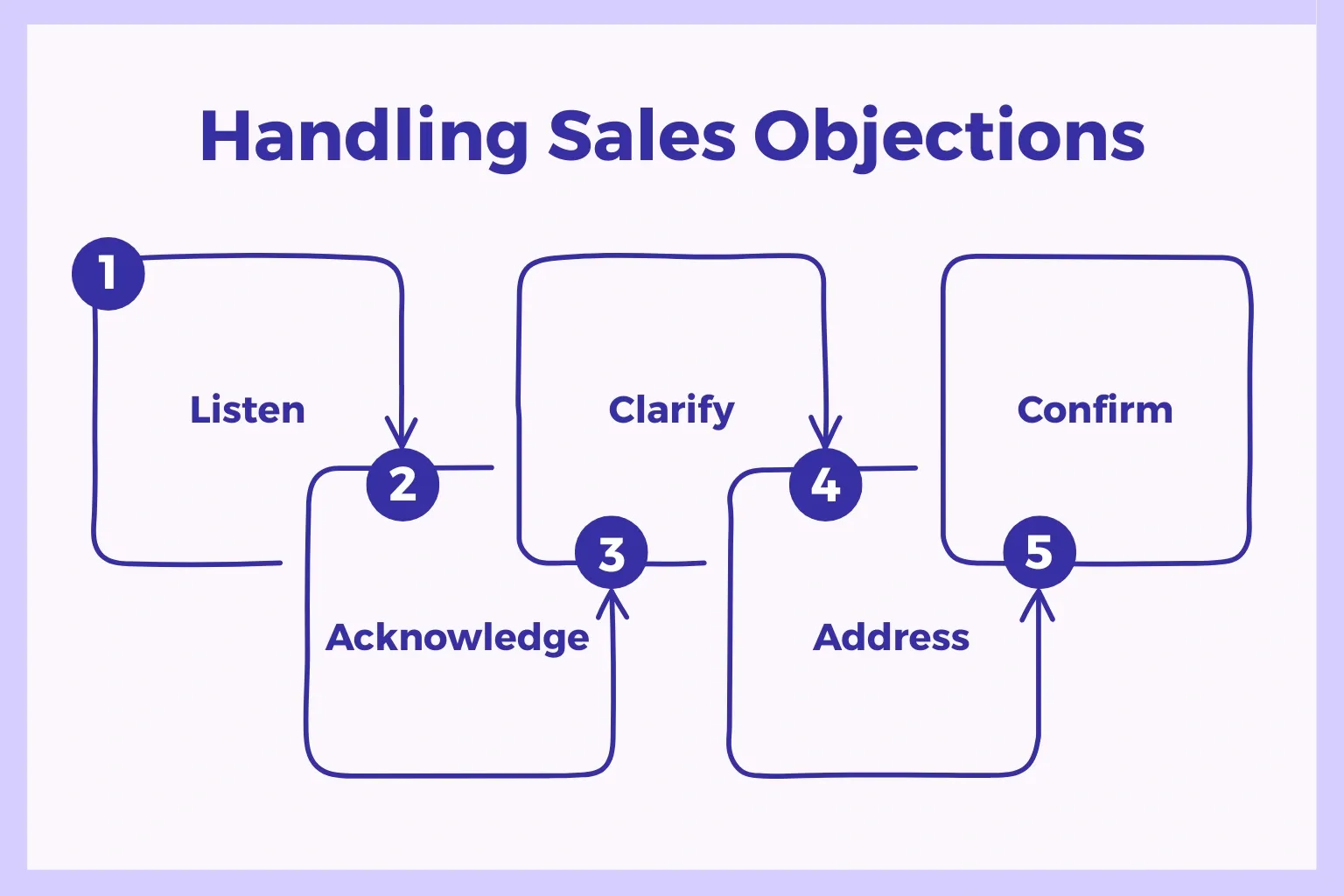
A systematic approach to objection handling increases your success rate and builds confidence in challenging conversations. This framework works for any objection type and helps you respond professionally under pressure.
Step 1: Listen completely
Allow prospects to fully express their concerns without interrupting. Often, the first objection they state isn't their real concern. By listening completely, you gather more information and show respect for their perspective.
Pay attention to both words and emotions. A prospect who says it’s too costly with frustration might be under budget pressure, while one who says it thoughtfully might be questioning value. These require different responses.
Ask clarifying questions if needed: "Please help me learn what you mean by..." or "Can you give me an example of..."
Step 2: Acknowledge and empathize
Validate their concern before attempting to address it. Acknowledgment doesn't mean agreement, but it shows you understand their perspective and take their concerns seriously.
Use phrases like "I see why that's important to you," "That's a valid concern," or "Many customers have asked about that." This reduces defensiveness and creates a collaborative atmosphere for problem-solving.
Step 3: Clarify the real concern
Dig deeper to learn the underlying issue behind the stated objection. Often, surface-level objections mask more fundamental concerns that need to be addressed.
Ask probing questions to uncover the real issue: "What specifically concerns you about the implementation?" "What would need to happen for the budget to be approved?" "Help me learn your current process and where you see challenges."
Sometimes prospects raise objections to test your knowledge or gauge your commitment to solving their problems. Clarifying questions help you figure out whether you're dealing with a genuine concern or a testing scenario.
Step 4: Address with evidence
The best way to counter objections is with proof. Share case studies, testimonials, or industry data that show real results. Specific examples feel far more credible than generic answers and position you as a trusted partner.
For feature, workflow, or integration concerns, visual proof works even better. Interactive demo tools like Supademo let you show exactly how your solution fits. You can create personalized walkthroughs in minutes and share them in recaps, with champions, or in outreach to handle objections before they grow.
Here is an example interactive demo showing how Wise works in practice:
Step 5: Confirm and advance
After addressing their concern, confirm they're satisfied with your response and identify the next step. Don't assume the objection is handled just because you provided an answer.
Ask confirmation questions: "Does that address your concern about implementation?" "How does that sound for your situation?" "What other questions do you have about this aspect?"
If they're satisfied, advance the conversation: "Great, so if implementation isn't a barrier, what would you like to explore next?" or "Now that we've addressed that concern, are you ready to discuss next steps?"
What are the best AI-driven sales roleplay platforms for real-time objection handling?
AI-powered roleplay platforms help sales teams practice objection handling in realistic scenarios. Some of the best AI-driven sales roleplay platforms include:
- Second Nature: It’s a powerful AI-powered sales role-play platform that comes with a wide range of templates for different uses. You get role-play options for all common sales scenarios like discovery calls, objection handling, and more.
- Hyperbound: It comes with features like AI-powered sales roleplay, call scoring, coaching, and hiring assessments. It’s ideal for sales teams that want to scale faster and require a complete AI-powered role-play solution.
- Quantified: It offers AI-powered coaching and simulations for effective sales training. It’s ideal for enterprise teams and easily integrates with popular tools such as Salesforce, Microsoft Dynamics, and Docebo.
Start handling sales objections effectively with Supademo
The most effective objection-handling strategy is preventing objections before they happen. Using Supademo, you can create Interactive demos that give prospects hands-on experience with your solution, often preventing objections before they arise by letting prospects see value firsthand.
Here's how Supademo helps you handle objections more effectively:
- Guided screenshot and video demos: Capture your product in action and let prospects explore key features at their own pace, reducing confusion about functionality.
- Sandbox demo environments: Give prospects a risk-free way to test your solution without setup or commitment, building confidence before purchase decisions.
- Personalization at scale: Create targeted demo experiences for different stakeholders and use cases, addressing specific concerns before they become objections.
- Analytics on viewer engagement: See which features prospects spend time exploring to learn their priorities and prepare for likely questions.
- Showcase collections: Group multiple demos to address various objection types and use cases in one shareable experience.
Sales teams using interactive demos report a 28% reduction in Customer Acquisition Cost (CAC) and a 33% increase in deal velocity. When prospects can see and feel how your solution solves their problems, objections become conversations about implementation and value.
Don't let objections slow down your sales cycle. Create interactive demos that let prospects experience your solution firsthand, reducing resistance and accelerating deals. Try Supademo for free today!
FAQs
What's the difference between a genuine objection and a delaying tactic?
Genuine objections include specific concerns with detailed questions, while delaying tactics use vague language without specifics. Real objections invite dialogue and problem-solving conversations.
How to train sales reps on objection handling using real examples?
Record actual sales conversations with permission, analyze successful objection handling instances, and create roleplay scenarios. Practice with common situations your team encounters regularly.
Should I address objections immediately or wait for the prospect to finish speaking?
Always let prospects finish speaking completely before responding to show respect and gather full information. Interrupting prevents you from learning their complete concern and can make them feel unheard.
How do I handle the "I need to think about it" objection without being pushy?
Ask what specifically they need to think about and what additional information would help their decision. Offer to schedule a follow-up after they've had time to consider your discussion.
What's the best way to respond when a prospect says your price is too high?
Shift focus from price to value by asking what they're comparing against and exploring current costs. Help them see the financial impact of their current situation versus your solution.
How can I prevent common objections from coming up in the first place?
Address likely concerns proactively during your presentation using social proof and case studies, and qualify prospects thoroughly. Show rather than just tell whenever possible.
Is it appropriate to ask "What would it take for you to move forward today?" when facing objections?
Yes, when used appropriately after addressing concerns and confirming interest in your solution. This question helps identify remaining barriers and moves toward commitment.
How do I handle objections about working with competitors or existing vendors?
Focus on your unique value proposition and differentiation rather than criticizing competitors directly. Ask about their evaluation criteria and specific requirements to position your strengths.
What should I do when a prospect raises an objection I don't know how to answer?
Be honest that you need to research their specific question and commit to a timeline. Use it as an opportunity to involve technical experts and show your commitment to thorough answers.
How many times should I attempt to overcome the same objection before moving on?
Address the objection thoroughly once, then ask if they're satisfied with your response. If it keeps coming up, there's likely a deeper concern you haven't uncovered yet.
What's the most effective framework for structuring my response to any sales objection?
Use the acknowledge, clarify, address with evidence, confirm and advance approach for any objection. This systematic method shows respect while moving the conversation forward productively.


